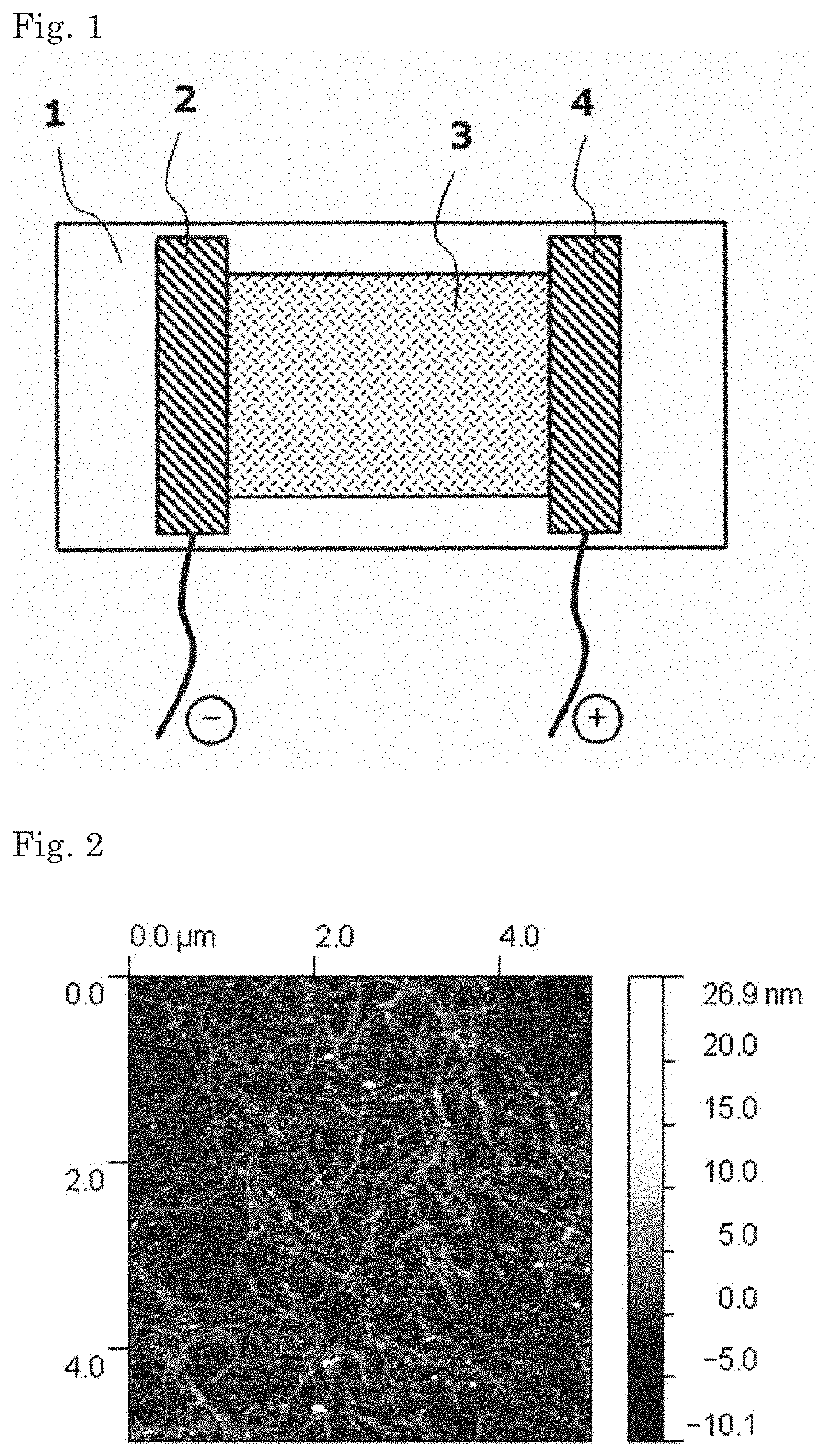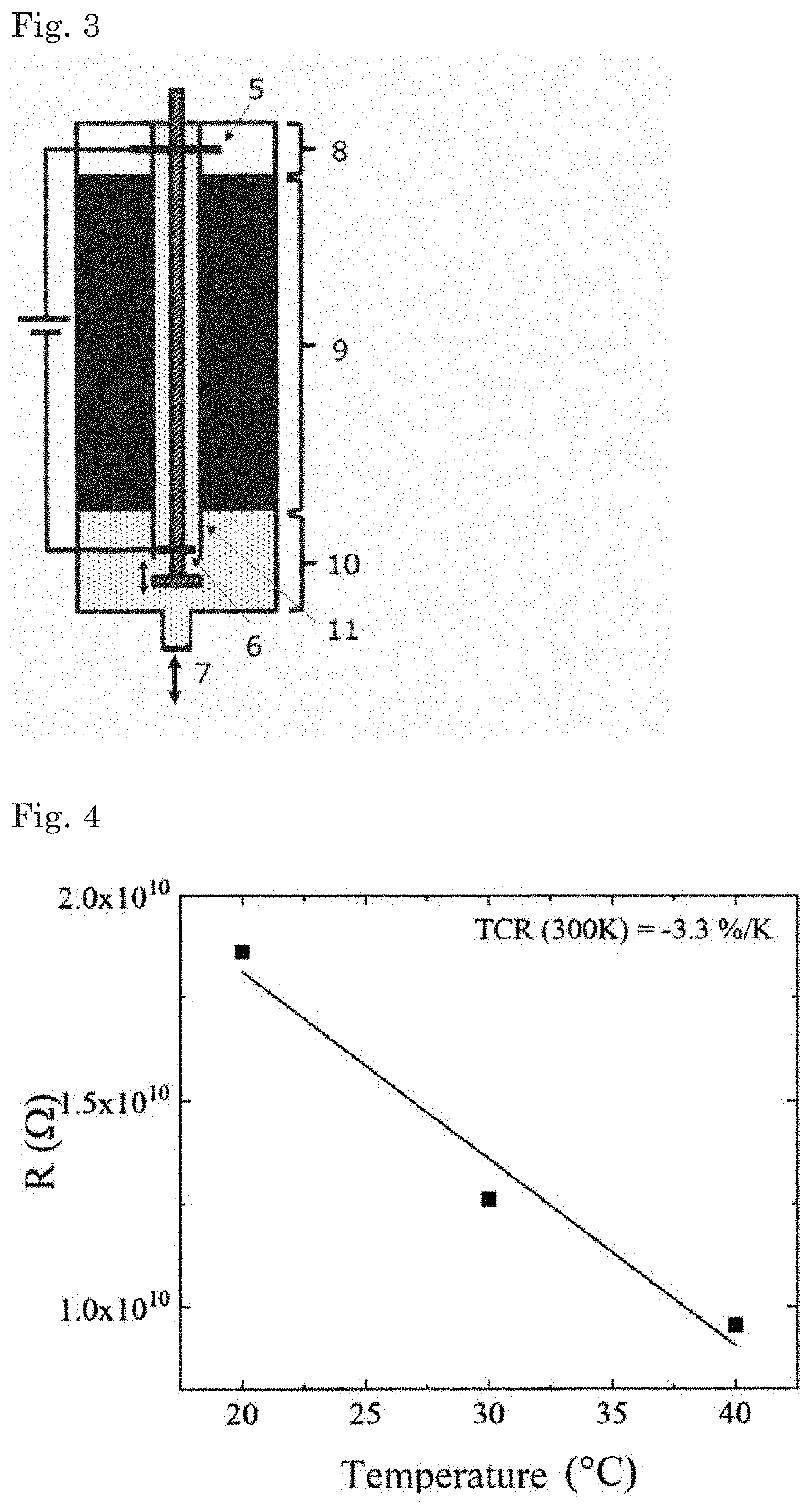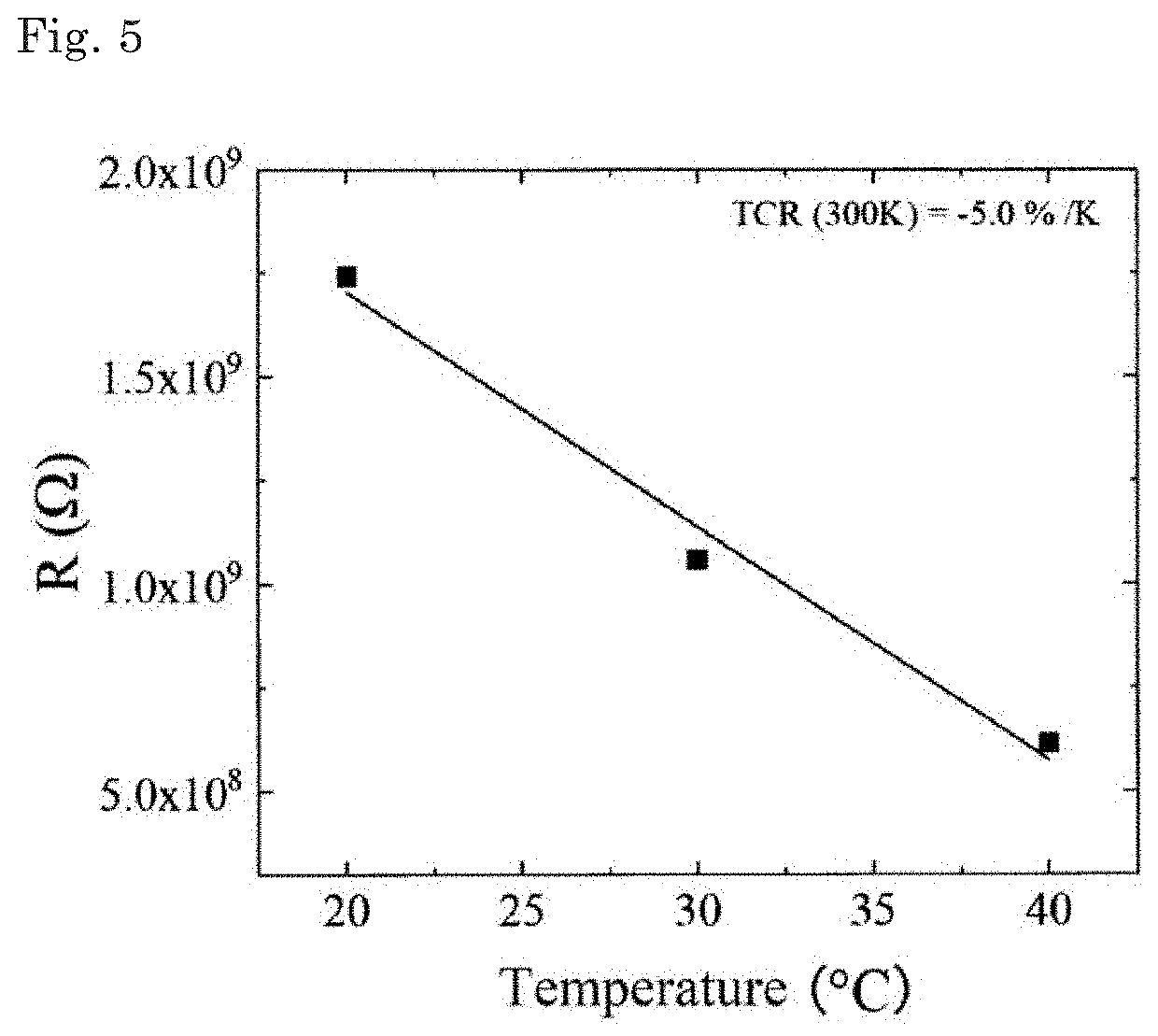Infrared sensor using carbon nanotubes and method for manufacturing same
a technology of carbon nanotubes and infrared sensors, which is applied in the direction of optical radiation measurement, radiation control devices, instruments, etc., can solve the problems of high process cost and achieve the effect of high tcr valu
- Summary
- Abstract
- Description
- Claims
- Application Information
AI Technical Summary
Benefits of technology
Problems solved by technology
Method used
Image
Examples
example 1
(Step 1)
[0083]100 mg of single-walled carbon nanotubes (Meijo Nano Carbon Co., Ltd., EC 1.0 (diameter: about 1.1 to 1.5 nm (average diameter 1.2 nm)) was put in a quartz boat and heat treatment was performed under a vacuum atmosphere using an electric furnace. It was performed at a heat treatment temperature of 900° C. for 2 hours. The weight after heat treatment was reduced to 80 mg, and it was found that the surface functional groups and impurities were removed. After the obtained single-walled carbon nanotubes were fractured with tweezers, 12 mg of which was immersed in 40 ml of an aqueous solution of 1 wt % surfactant (polyoxyethylene (100) stearyl ether) and after sufficient sedimentation, the mixture was subjected to ultrasonic dispersion treatment (BRANSON ADVANCED-DIGITAL SONIFIER apparatus (output: 50 W)) for 3 hours. Through this step, aggregates of the carbon nanotubes in the solution were eliminated. Thereafter, ultracentrifugation treatment was performed under condition...
example 2
[0090]An infrared sensor was produced in the same process as step 1 to 3 in Example 1 with single-walled carbon nanotubes, at least 70% of which have a diameter about 0.8 to 1.1 nm (average diameter: 0.9 nm), except that carbon nanotubes having a small diameter of about 0.8 to 1.1 nm (average diameter: 0.9 nm) were used as the raw material in step 1 in Example 1. FIG. 5 shows the change in resistance value when the temperature of the infrared sensor was changed. The TCR value (dR / RdT) was about −5.0% / K at 300 K. This high TCR value is due to the further reduced diameter and the increased band gap. From these results, it was found that the TCR value can be controlled by changing the diameter of the carbon nanotubes.
PUM
| Property | Measurement | Unit |
|---|---|---|
| length | aaaaa | aaaaa |
| length | aaaaa | aaaaa |
| distance | aaaaa | aaaaa |
Abstract
Description
Claims
Application Information
 Login to View More
Login to View More - R&D
- Intellectual Property
- Life Sciences
- Materials
- Tech Scout
- Unparalleled Data Quality
- Higher Quality Content
- 60% Fewer Hallucinations
Browse by: Latest US Patents, China's latest patents, Technical Efficacy Thesaurus, Application Domain, Technology Topic, Popular Technical Reports.
© 2025 PatSnap. All rights reserved.Legal|Privacy policy|Modern Slavery Act Transparency Statement|Sitemap|About US| Contact US: help@patsnap.com



